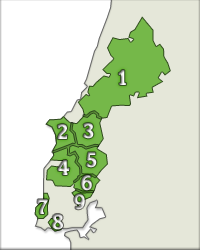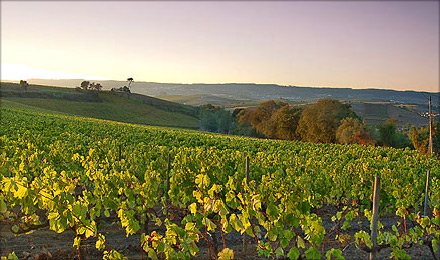tamoxifen dosage
tamoxifen uk brandsLisboa has a long history in national viticulture. This region's vine area is made up of traditional grape varieties and the most famous international ones. Lisboa's diversity of relief and microclimates enables the region to produce a great variety of wines.
Formerly known as Estremadura, Lisboa wine region is located north west of Lisbon, occupying an area of about 40 km. The climate is mild due to Atlantic influence. Summers are fresh and winters soft, though colder in areas farther from the sea.
Although the region has good potential for the production of quality wines, about fifteen years ago it was essentially known for producing large quantities of low quality wine. Since then, the vines and wineries have been restructured. One of the restructuring steps involved planting new grape varieties, chosen according to quality, not quantity. Today, Lisboa's wines are known for their good quality/price ratio.
The region focused on the growing of the noblest Portuguese and foreign grape varieties. In 1993, a new type of wine was created: the Vinho Regional Lisboa (free translation: Lisboa Regional Wine). This new type of wine encouraged producers to study the potential of the different grape varieties and, currently, most wines produced in Lisboa wine region are regional (the law for DOC wines is very restrictive on the use of grape varieties).
Lisboa wine region is made up of nine Denominations of Origin: Colares, Carcavelos and Bucelas (in the south, near Lisbon), Alenquer, Arruda, Torres Vedras, Lourinhã and Óbidos (in the centre of the region) and Encostas d'Aire (in the north, close to the Beiras region).
The formerly famous regions of Colares, Carcavelos and Bucelas are now only of historic interest. The proximity to the capital and the need for urbanisation have almost lead these region's vines to extinction.
The Denomination of Origin of Bucelas, demarcated in 1911, produces only white wines. The wines are mainly made up of the Arinto grape and have been much appreciated worldwide, especially by the English court. Bucelas' white wines have a well balanced acidity, floral aromas and are capable of maintaining their qualities for years.
Colares is a Denomination of Origin located in the southern area of Lisboa wine region. It is very close to the sea and its vines are grown on limestone soils or sand. The wines are produced from the Ramisco grape, but the region's production rarely achieves 10000 bottles.
Most of the investments in the region went to the central areas (Óbidos, Arruda, Torres Vedras and Alenquer): the vines were modernised and new grape varieties were planted. Today, this region's best DOC wines come from red grape varieties such as Castelão, Aragonez (Tinta Roriz), Touriga Nacional, Tinta Miúda and Trincadeira, which are sometimes blended with the Alicante Bouschet, Touriga Franca, Cabernet Sauvignon and Syrah grapes, among others. The white wines are usually made from the Arinto, Fernão Pires, Seara-Nova and Vital grape varieties, though Chardonnay is also grown in some areas.
The region of Alenquer produces some of the most prestigious DOC wines in Lisboa wine region (red and white). The vines are protected from the Atlantic winds, which favours the ripening of the grapes and the production of more concentrated wines. In other areas of Lisboa wine region red wines are elegant, aromatic, rich in tannins and capable of ageing for some years in bottle. White wines have a fresh and citric character.
Encostas D'Aire, the region's largest Denomination of Origin, was the last one to suffer the consequences of modernisation. New grape varieties were planted (such as Baga or Castelão), as well as some white ones (Arinto, Malvasia Fina and Fernão Pires) that share fields with other Portuguese and international grapes as, for instance, Chardonnay, Cabernet Sauvignon, Aragonez, Touriga Nacional or Trincadeira. The wines' profiles started to change: they gained more colour, body and intensity.
-
 Comissão Vitivinícola da Região de Lisboa
Comissão Vitivinícola da Região de Lisboa
Rua Cândido dos Reis - Apartado 145
2560-312 Torres Vedras
Tel.: 261 31 67 24
Fax: 261 31 35 41
cvr.lisboa@mail.telepac.pt
www.vinhosdelisboa.com
Sub-regions

- 1| Encostas de Aire
- 2| Lourinhã
- 3| Óbidos
- 4| Torres Vedras
- 5| Alenquer
- 6| Arruda
- 7| Colares
- 8| Carcavelos
- 9| Bucelas
Curiosities
Bucelas wine
This wine was very famous in the time of the French Invasions (1808-1810). Wellington was very fond of Bucelas wine and took it to England with the intention of offering it to King George III.Carcavelos wine
Wellington's troops would frequently drink this wine and took this custom to England. Thus, for several years, Carcavelos wine was widely exported to that country.Lisbon Hock
In the second half of the 16th Century, Bucelas wine was already known in England. The English would call it Lisbon Hock, meaning dry white wine.


 Wine Regions
Wine Regions Vinhos Verdes
Vinhos Verdes Trás-os-Montes
Trás-os-Montes Douro
Douro Bairrada
Bairrada Dão
Dão Beira Interior, Távor...
Beira Interior, Távor... Lisboa
Lisboa Tejo
Tejo Península de Setúbal
Península de Setúbal Alentejo
Alentejo Algarve
Algarve Madeira
Madeira Azores
Azores
 Wine routes
Wine routes





